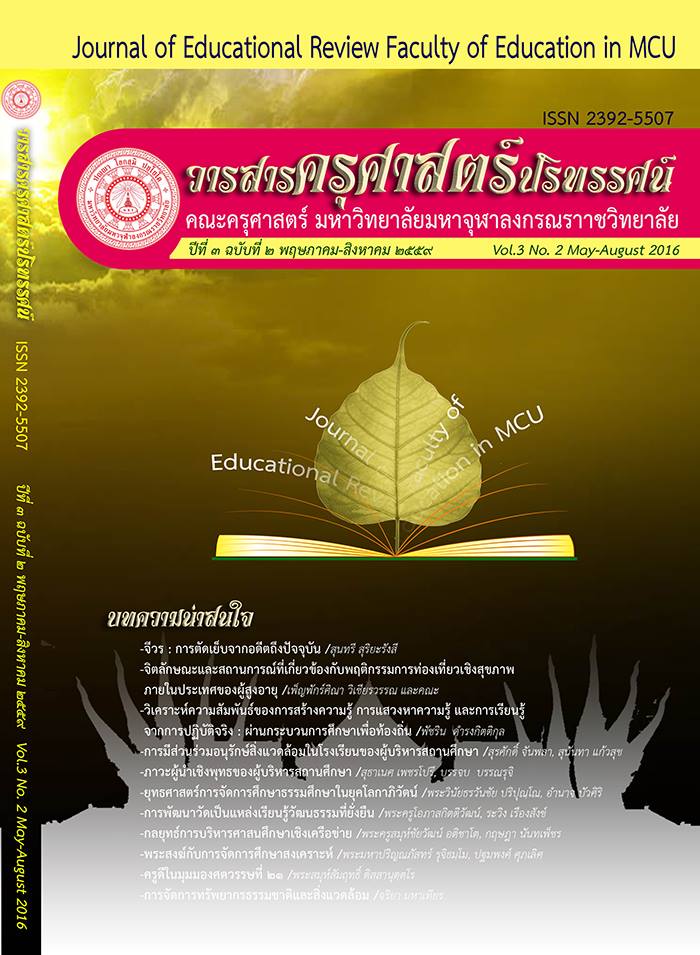Civara: Tailoring from the Past to the Present
Main Article Content
บทคัดย่อ
In the Buddha’s time, the term ‘Civara’ w as not found. A person who
desired to ordain had to shave their head and changed their clothes. There were two
groups of ascetics: Samana and Bràhmana. Prince Siddhattha was identified as the
Samana, who shaved his head and wore the discarded cloth taken from the rubbish
heap or the charnel ground. Those fabrics were mostly contaminated with dust or
dirt; therefore, they were called Pansukula or the rag-robes. At one occasion, the
Buddha went through the field of Dakkhinagiri and recommended that the robe
design should be cut in the pattern of the Magadha paddy-fields. The earliest robes
were made of rectangular pieces of cloth and later become a traditional dress of the
Buddhist monks. The rules and discipline codes concerning the robes were laid down
when there were disciples became monks.
The robes of Buddhist monks have been continued for 2600 years.
Therefore, the robe is considered as the cultural dress of the Theravada Buddhist
monks indicating the art of design. The robe design was originally based on the
Magadhan paddy-fields and became a work of art for the clothing of Buddhist monks
with a specific sewing method and colors.
Article Details
ทัศนะและความคิดเห็นที่ปรากฏในบทความในวารสารฉบับนี้ถือเป็นความรับผิดชอบของผู้เขียนบทความนั้นเพียงผู้เดียว และไม่ถือเป็นทัศนะและความรับผิดชอบของกองบรรณาธิการ
กองบรรณาธิการขอสงวนสิทธิ์ในการคัดเลือกบทความลงตีพิมพ์และจะแจ้งให้เจ้าของบทความทราบหลังจากผู้ประเมินบทความตรวจอ่านบทความแล้ว
ต้นฉบับที่ได้รับการตีพิมพ์ในวารสารครุศาสตร์ปริทรรศน์ คณะครุศาสตร์ มหาวิทยาลัยมหาจุฬาลงกรณราชวิทยาลัย ถือเป็นกรรมสิทธิ์ของคณะครุศาสตร์ มหาวิทยาลัยมหาจุฬาลงกรณราชวิทยาลัย ห้ามนำข้อความทั้งหมดหรือบางส่วนไปพิมพ์ซ้ำ เว้นเสียแต่ว่าจะได้รับอนุญาตจากมหาวิทยาลัยฯ เป็นลายลักษณ์อักษร


